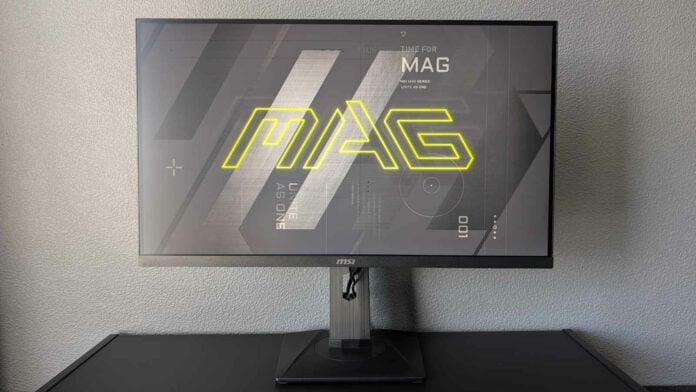Competition is fierce in the midrange monitor market, but cream always rises to the top. Case in point, just look at MSI MAG 274QRF QD E2. This screen is a cut above plenty of panels I’ve seen in this price bracket, making for an awesomely affordable display.
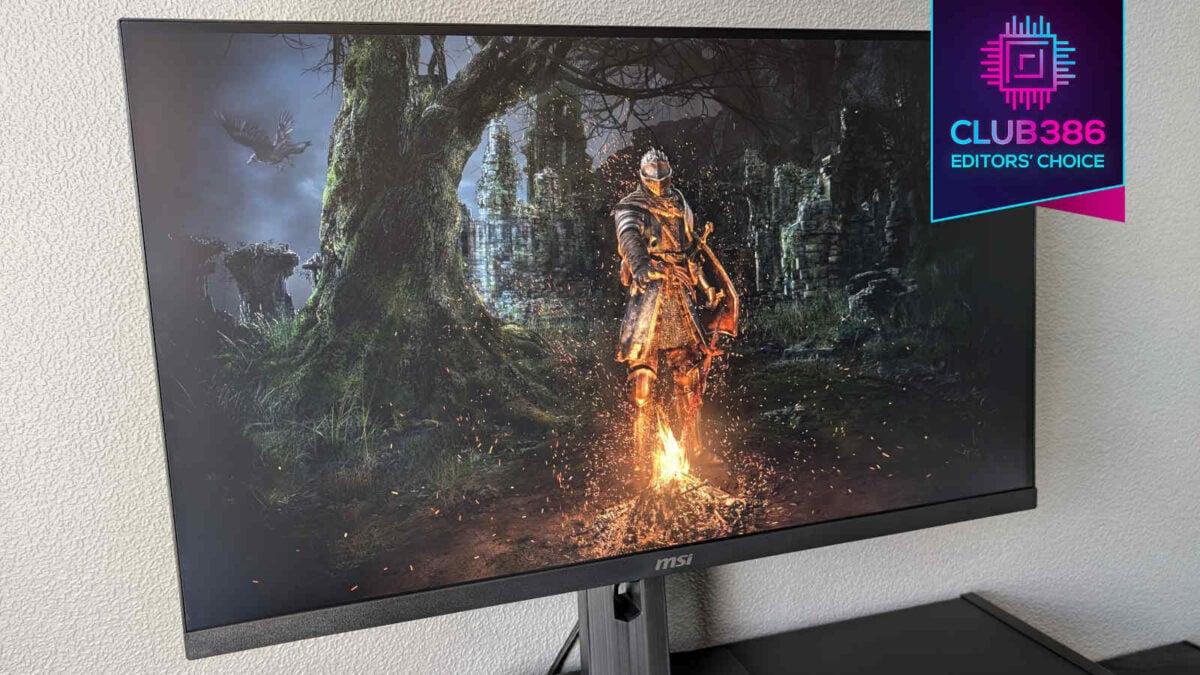
MSI MAG 274QRF QD E2
£250 / $280
Pros
- 27in QHD form factor
- 180Hz refresh rate
- Excellent colour accuracy
- 65W USB-C with DP Alt
- Low power consumption
Cons
- Middling contrast
- No local dimming for HDR
Club386 may earn an affiliate commission when you purchase products through links on our site.
How we test and review products.
I’ve spent the past few weeks happily putting MAG 274QRF QD E2 through its paces. Without spoiling too much, I can confidently say it qualifies as one of the best gaming monitors on the market. While just shy of perfect, its generally impressive performance easily eclipses its handful of weaknesses.
Specs
| MSI MAG 274QRF QD E2 specification | |
|---|---|
| Screen size | 27in |
| Resolution | 2,560×1,440 |
| Refresh rate | 180Hz |
| Panel technology | IPS |
| Variable refresh rate | Yes (AMD FreeSync) |
| HDR | Yes (DisplayHDR 400) |
| KVM switch | Yes |
| Ports | 3.5mm headphone out (x1) DisplayPort 1.4a (x1) HDMI 2.0b (x2) USB Type-C (DP Alt, 65W power delivery) (x1) USB Type-A downstream (x2) USB Type-B upstream (x1) |
| Speakers | No |
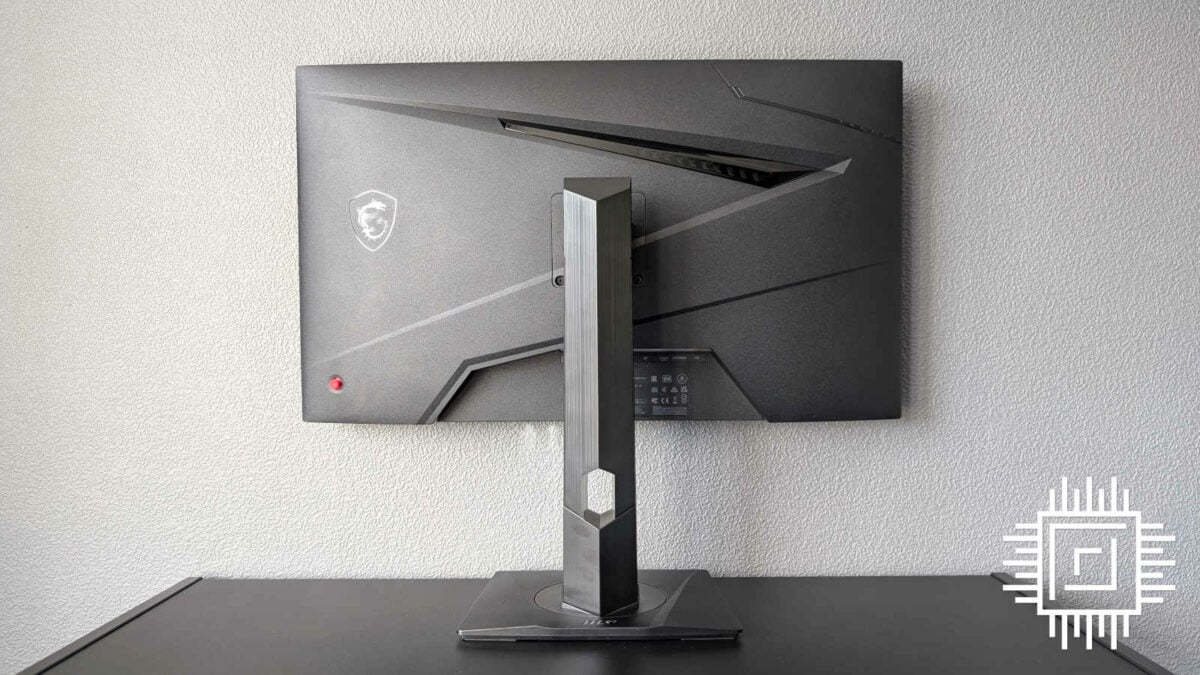
Design and features
MAG 274QRF QD E2 doesn’t rock the boat when it comes to its design, but it hits the mark where it matters. Keen to not focus on function over form, its all-black plastic body feels sturdy and pleasant to the touch. Various grooves and sharp edges also help the monitor stand out from the crowd with a welcome touch of flair.
Less welcome is the small LED strip on the rear. Curiously, it’s off by default. However, you’d struggle to notice its effects while on. Like countless other displays, these LEDs simply aren’t bright enough nor do they add any substantial value to the viewing experience. MSI isn’t alone in doing this, but I’ll continue to complain about RGB on monitors until manufacturers get the message.
Assembly is simple, albeit sadly not tool-free, thanks to two Philips head screws. It’s an unfortunate blemish on an otherwise solid stand, particularly when competition like ASRock PG27QFT2A allows you to forgo a screwdriver. Still, all things considered, I give kudos to MSI for pairing MAG 27QRF QD E2 with a square stand in place of two long legs that gobble up desk space.
The included stand offers a respectable amount of adjustability, too. More specifically, there’s 130mm of height to play with, alongside a 45° range of swivel, 25° of tilt, and 90° rotation. You can use your own 75mm VESA mount in its place.
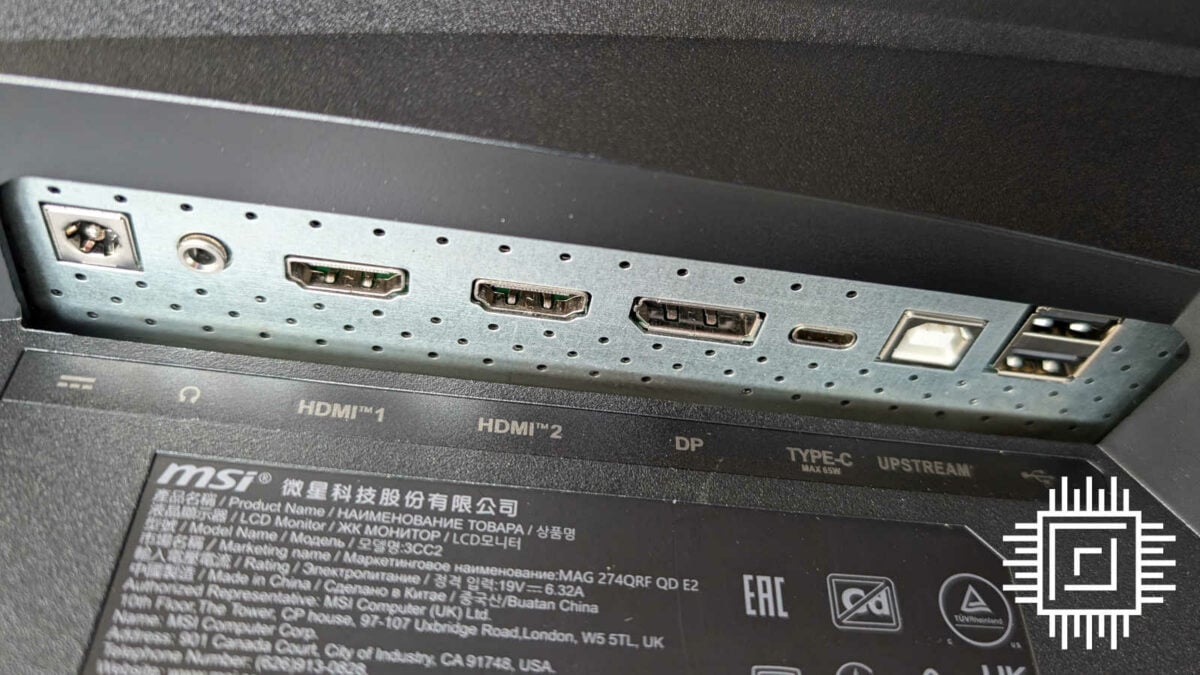
I/O is of a similarly good standard. It pleases me to see monitors in this price range sporting USB Type-C ports that support DP Alt Mode and power delivery. Better still, with 65W available, MAG 27QRF QD E2 puts expensive displays like Aorus FO27Q3 to shame.
As a gaming monitor, our primary focus remains its single DisplayPort 1.4a and two HDMI 2.0b inputs. The latter doesn’t provide enough bandwidth to make use of the display’s 180Hz refresh rate, topping out at 144Hz. This is fine for consoles and other devices, but DisplayPort is best for graphics cards.
MAG 27QRF QD E2 also houses a USB hub comprised of a single USB Type-B upstream and two USB Type-A 2.0 downstream ports. They’re all 2.0 in spec, limiting their usability for some high-bandwidth peripherals. However, they’ll do just fine for most mice and keyboards. Speaking of which, this monitor also features a KVM switch. As someone who frequently shifts between a laptop and a desktop, it’s a welcome sight.
All of this, as well as the panel itself, is powered by an external power brick. I generally prefer an integrated approach, but that does come at the expense of repairability. Plus, if my colleague Fahd were to review the very same model, he’d praise MSI’s approach, proving you can’t please everyone. Regardless, the transformer isn’t enormous or heavy and is easily tucked away.
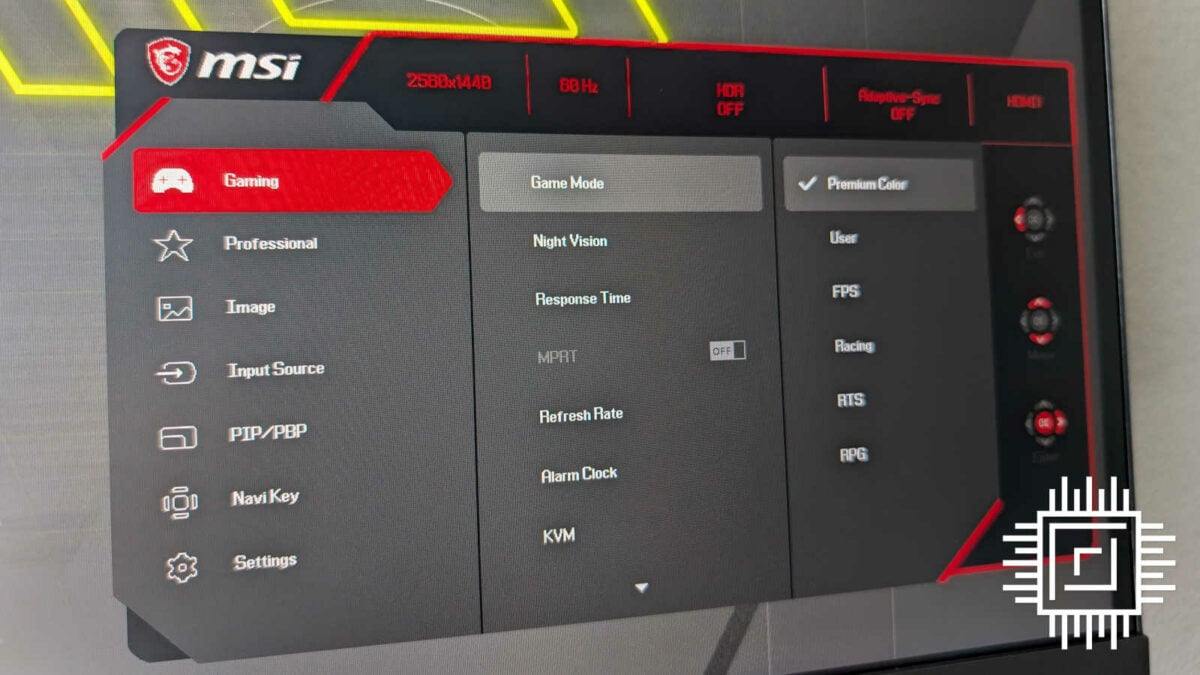
Surprisingly, the on-screen display forgoes features typical of other gaming monitors, like crosshairs and scopes. I’m glad to see guff like that get the chop, as it makes it much easier to find more important and useful options amidst the menus. Thankfully, navigating through them is easy, thanks to the joystick on the rear side of the screen.
MAG 27QRF QD E2 offers individual colour space profiles for sRGB, Adobe RGB, and DCI-P3. This will primarily be useful to content creators, but these gamut clamps also stave off oversaturation in certain types of content. As someone who highly values colour accuracy in their games and other media, I’m pleased as punch.
In addition to colour spaces, you can configure response times via three overdrive profiles: Normal, Fast, and Fastest. The monitor uses Fast by default, and it’s the best choice for most, according to my eyes. Fastest is too prone to ghosting, making any gains questionable, while Normal doesn’t improve under/overshooting enough to justify the increase in latency.
Curiously, Adaptive Sync is disabled out of the box on MAG 27QRF QD E2. The monitor is technically AMD FreeSync certified, so this may not be an issue on Radeon graphics cards. However, GeForce owners like me will need to dive into the OSD to benefit from variable refresh rate (VRR).
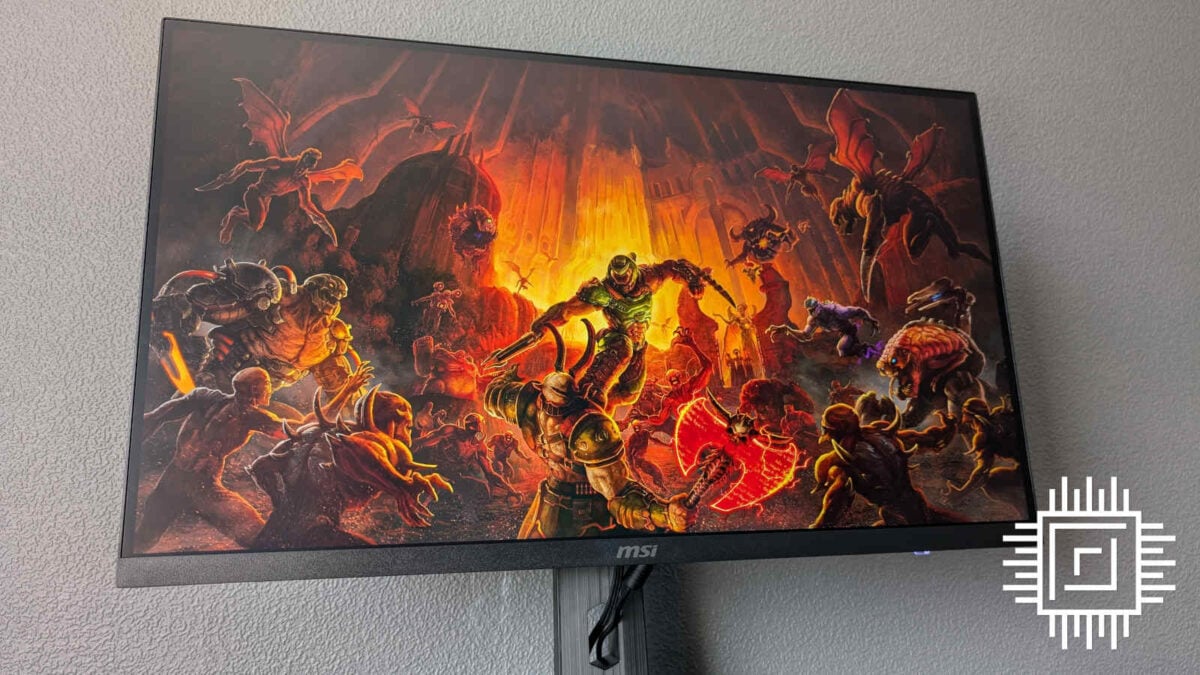
Performance
As mentioned, it’s been a while since I’ve used anything but an OLED monitor for gaming. That said, MAG 27QRF QD E2 impresses me. In fact, I’d go so far as to say it’s among the best IPS monitors I’ve had the pleasure of playing with.
27in is perfect for 2560×1440. With this combo, you both gain a larger screen and a higher pixel-per-inch (PPI) compared to 24in 1080p monitors. This relative increase in size and sharpness is easy to appreciate on this display, too. This is particularly true in single-player games, where you can stop and take a moment to appreciate finer details. However, competitive gamers will also benefit from how this resolution brings more information to the fore.
The quantum dot layer working in combination with MAG 27QRF QD E2’s panel really helps images come to life, though. For instance, the many reds of Left 4 Dead 2’s logo, items, and blood splatters all glow with a wonderfully visceral vibrancy. While crimson colours benefit the most, blues and greens shine too.
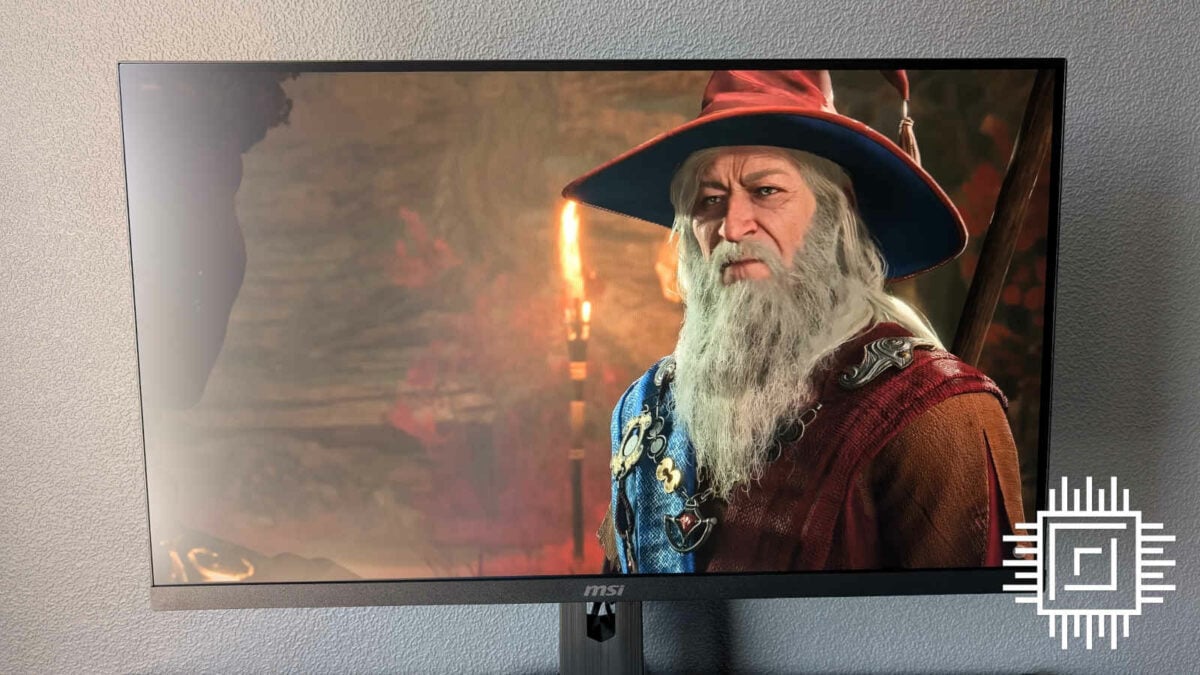
MSI claims this monitor has a 1ms response time, presumably using the Fastest overdrive preset. Still, even on Fast, I had no issues lining up my shots in fast-paced games like Counter-Strike 2 or Doom Eternal. This sentiment, of course, translates to single-player games, where I never felt like the display was holding me back in my (in)ability to dodge attacks in Dark Souls: Remastered.
A 180Hz refresh rate helps MAG 27QRF QD E2 stand out among its competitors. While not a huge jump over 120Hz in terms of frame times, from 8.33ms to 5.55ms, higher hertz begets better motion clarity. Naturally, you’ll need the graphics grunt and processing power to hit the high ceiling and drive all 3.7 million pixels at once.
The only real complaint I have about this monitor’s performance concerns HDR. Like other backlit displays with wide colour gamut coverage, it’s DisplayHDR 400 certified. However, without any form of local dimming, the benefits of a higher dynamic range disappear. This is an awesome SDR screen, but don’t bother switching that HDR toggle on.
Colour accuracy and gamut
Out of the box, MAG 27QRF QD E2 impresses with excellent colour accuracy and gamut coverage. While it understandably can’t keep up with some OLED models, it ranks among the top backlit monitors we’ve had across Club386 desks.
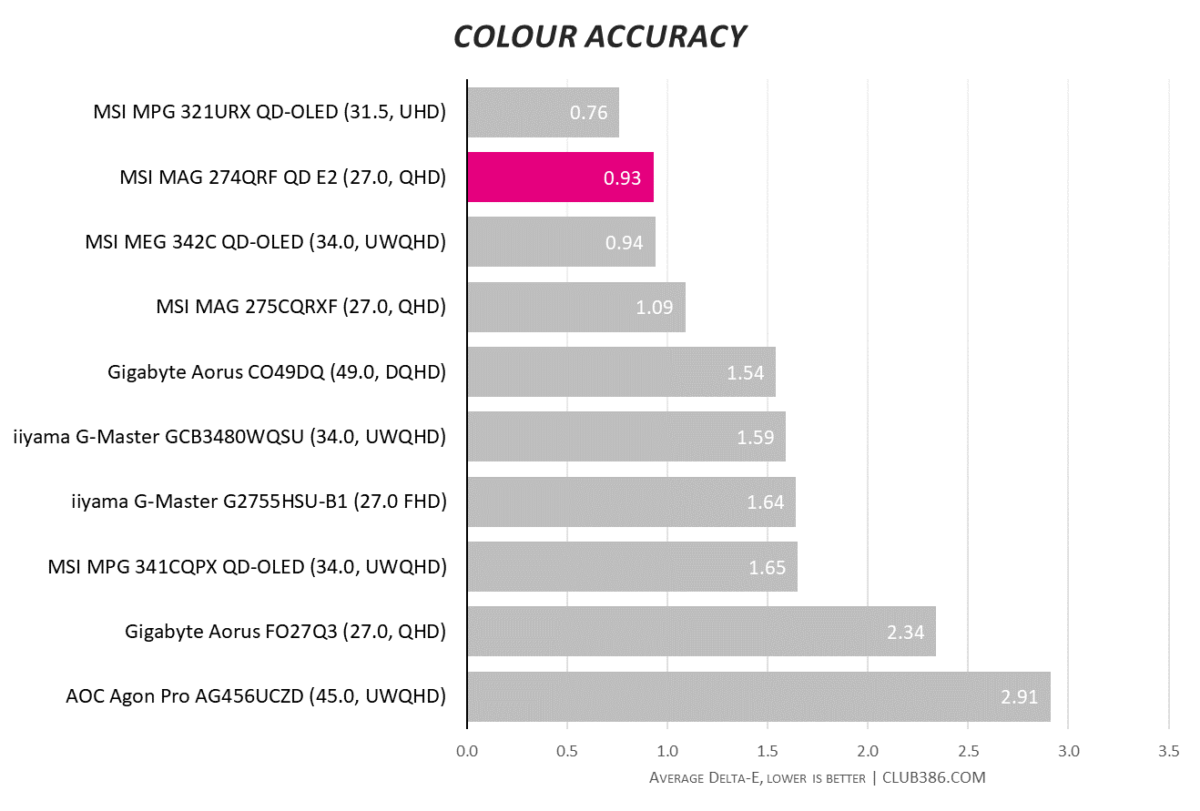
Boasting an average Delta E of 0.93, this monitor is practically perfect for all but the most discerning eyes in terms of colour reproduction. To add another feather to its proverbial cap, its largest Delta E was just 1.85, well within our threshold of ≦2.
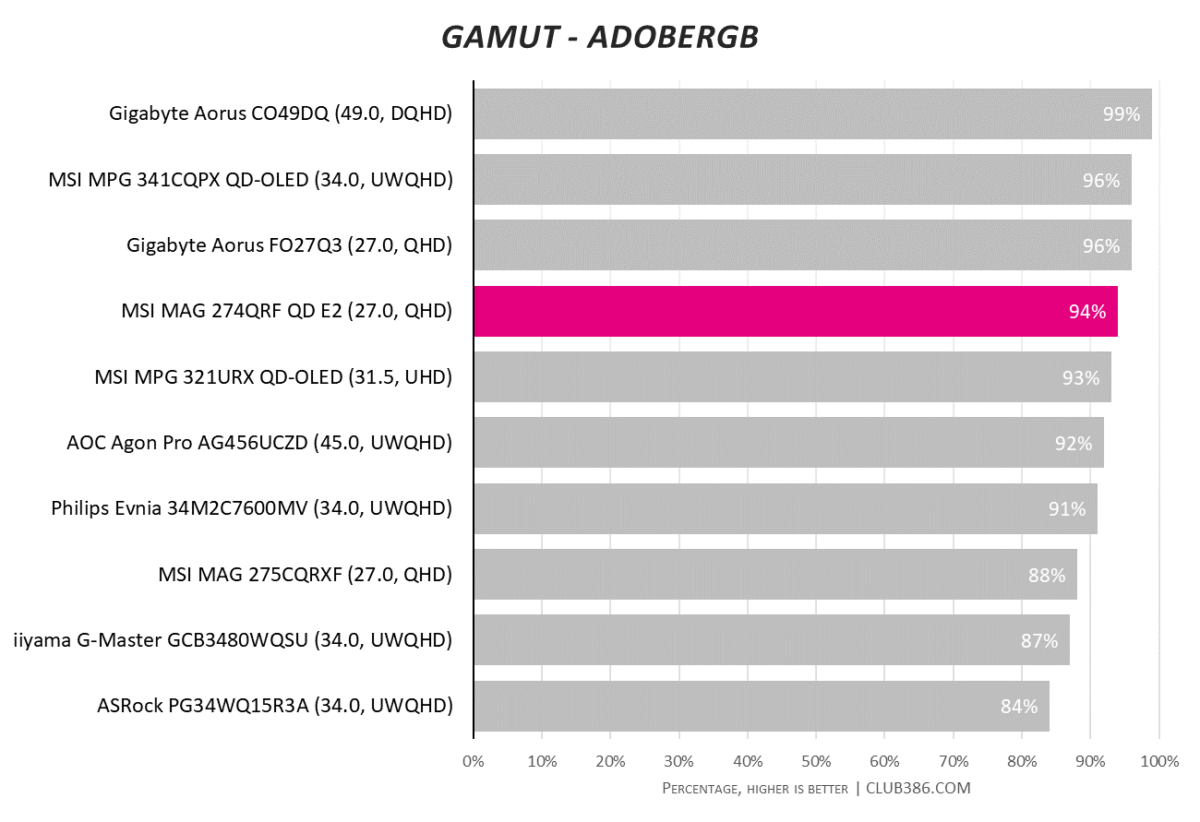
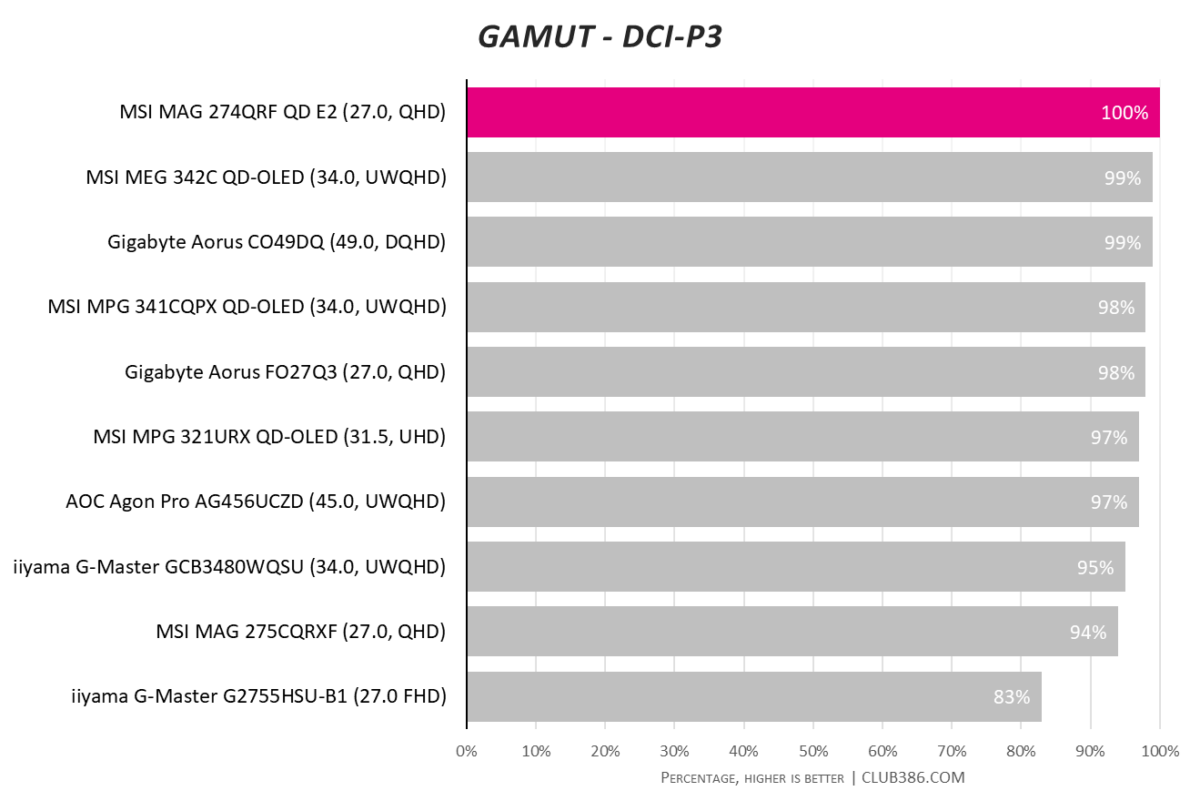
Gamut coverage is similarly impressive, spread over 100% of the DCI-P3 colour space and 94% of Adobe RGB. These qualities make it an excellent choice for some content creation, as well as gaming and media consumption.
All these positives are in part thanks to the quantum dot layer working in tandem with the monitor’s IPS panel. The technology has quickly become a must-have for me, across backlit and OLED screens, so it’s great to see on a reasonably affordable model.
Brightness, contrast, and black levels
IPS panels typically boast higher brightness than VA and OLED alternatives but offer a middling contrast. MAG 27QRF QD E2 doesn’t buck this trend, but it is one of the best examples we’ve seen in both categories for this screen technology.
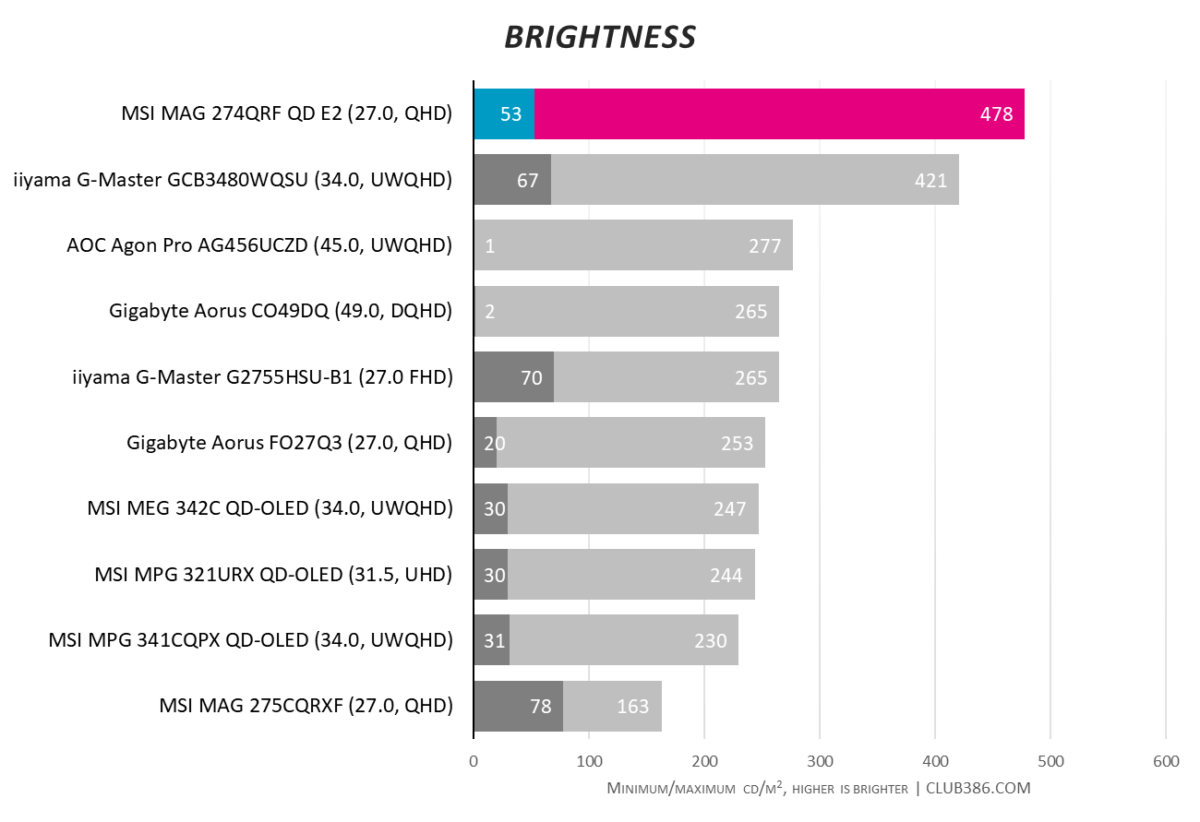
Peak brightness clocks in at 478nits and impressively drops to a low of 53nits, giving us a range of 425nits. This is about as good as you can expect results like these to get without the aid of Mini LED technology or a larger panel, as we’ve seen in the likes of Evnia 34M2C7600MV.
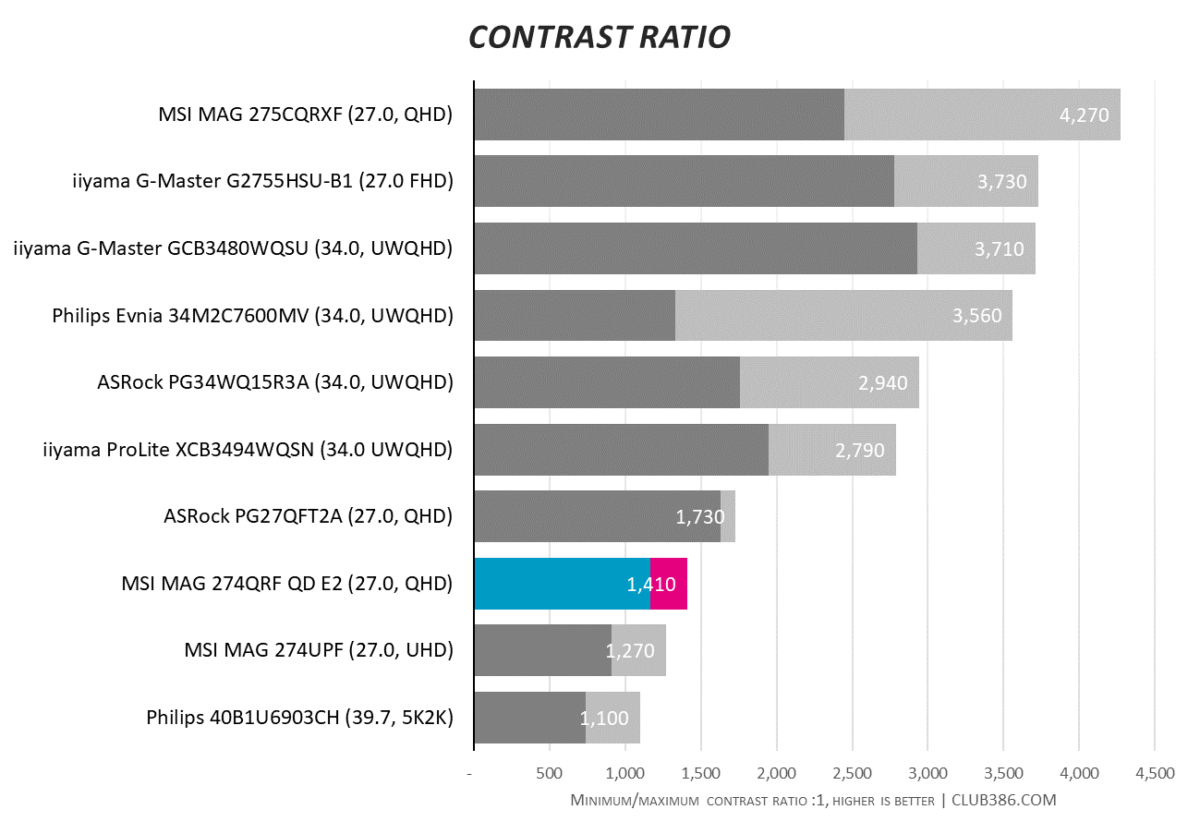
As expected, contrast is a sore spot for MAG 27QRF QD E2, topping out at 1,410:1. It does fine relative to other IPS monitors we’ve tested, even handily beating our longstanding favourite Optix MPG321QRF-QD. With VA and OLED thrown into the mix, though, its weaknesses become apparent.
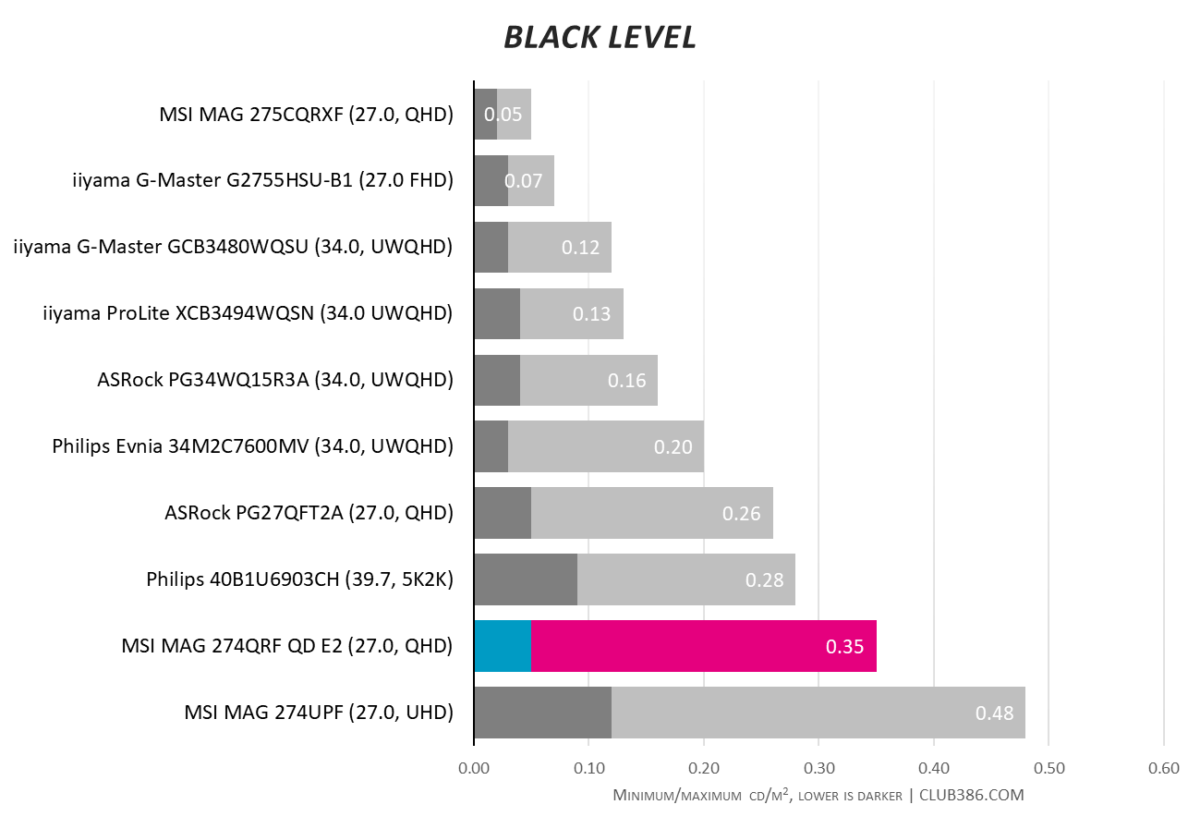
Similarly, raised black levels (0.05-0.35) create a muddy grey effect in some scenes. However, this is a problem that affects all backlit panels, and the monitor once again emerges ahead of its IPS peers.
Screen uniformity and power consumption
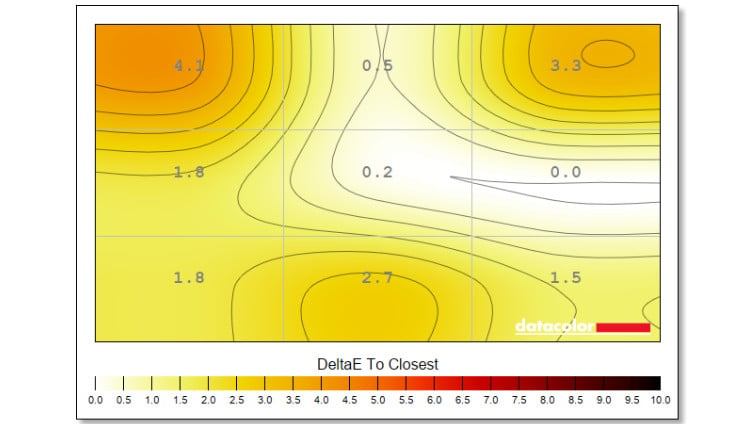
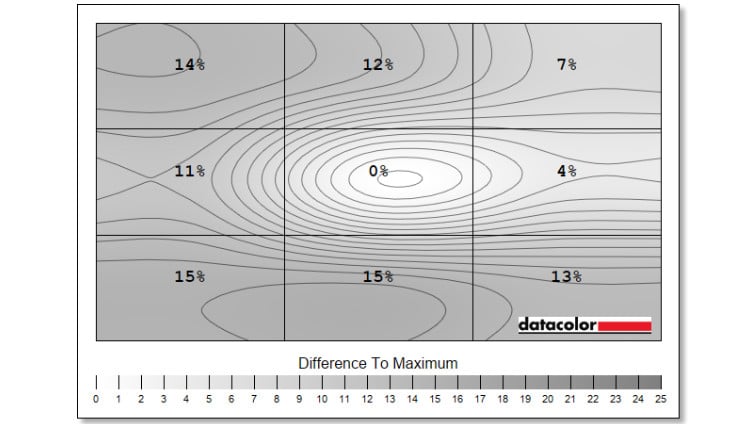
Colour uniformity on MAG 27QRF QD E2 is solid overall. The top-left quadrant of our unit spoils things a touch with a Delta E of 4.1 relative to D65 white point. This hampers the monitor’s content creation credentials but doesn’t impact gaming much at all.
Likewise, the backlit nature of the monitor leads to inconsistent luminance uniformity. Once again, this is typical panels without any form of local dimming present in OLED and Mini LED alternatives. I should also note that these results will vary slightly from unit to unit, so take the two images above as general performance expectations.
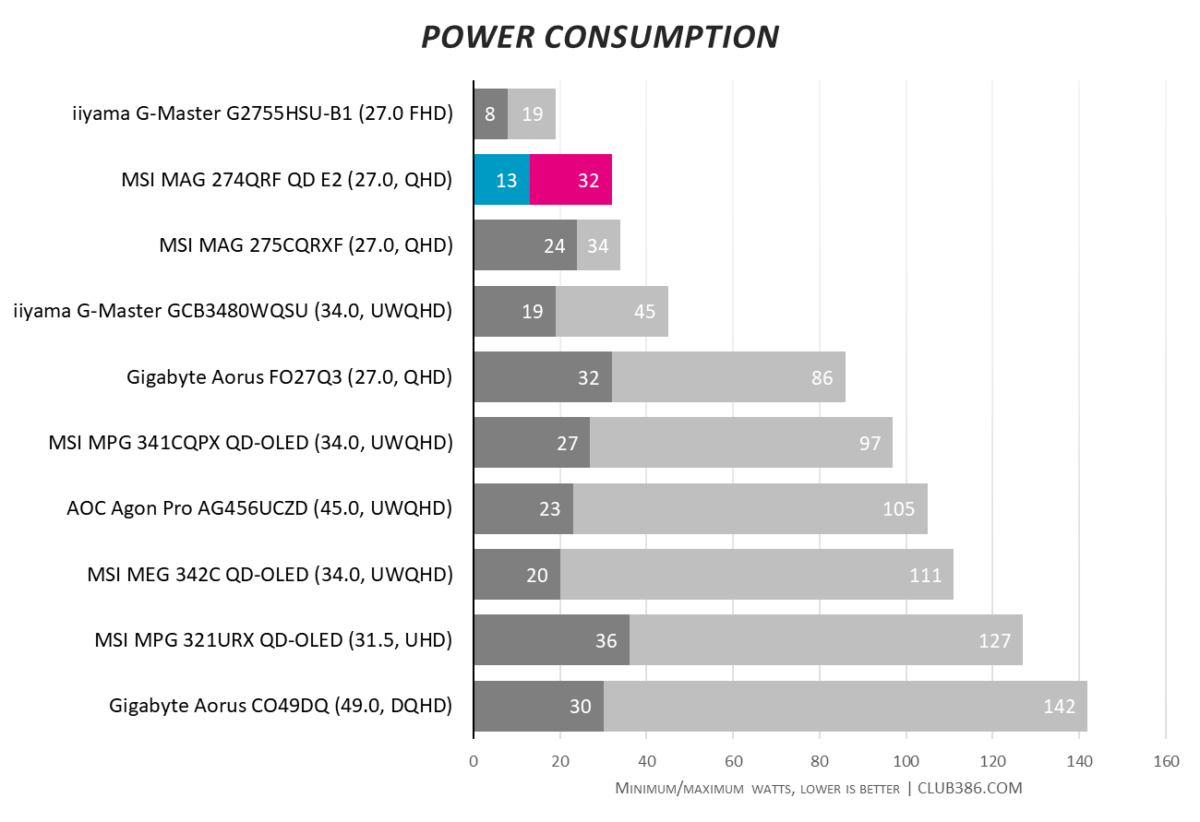
Finally, let’s talk about power consumption. MAG 27QRF QD E2 impresses with its relatively low requirements, starting from 13W and topping out at 32W. Even switching over from its default Eco preset to sRGB sees these values remain consistent.
Conclusion
In case it wasn’t already obvious, I’m rather fond of this MSI monitor. It delivers what I expect to a high standard, almost washing away all its minor weaknesses. Were I in the market for a backlit display, this would quickly make the shortlist.
MAG 274QRF QD E2 launched with an MSRP of $280 (£250), pushing it into mid-range territory. Thankfully, it’s frequently on sale, improving the value tremendously. At the time of writing, it’s available for as little as £200 making it an absolute steal. That said, I have little trouble recommending it, even at full price.
Perhaps the biggest compliment I can pay this monitor is that I’m seriously considering upgrading my partner’s setup with one. For casual and competitive gamers alike, MSI’s done well here.
Verdict: A shining example of an IPS gaming monitor with value that just keeps on giving.


